The mirrorless camera is a new type of camera that is replacing DSLRs. They have been around for a while now, but they are still not as popular as DSLRs. However, they are gaining more and more popular because they are much lighter and easier to carry around than DSLRs. They also have better image quality than other types of cameras on the market.
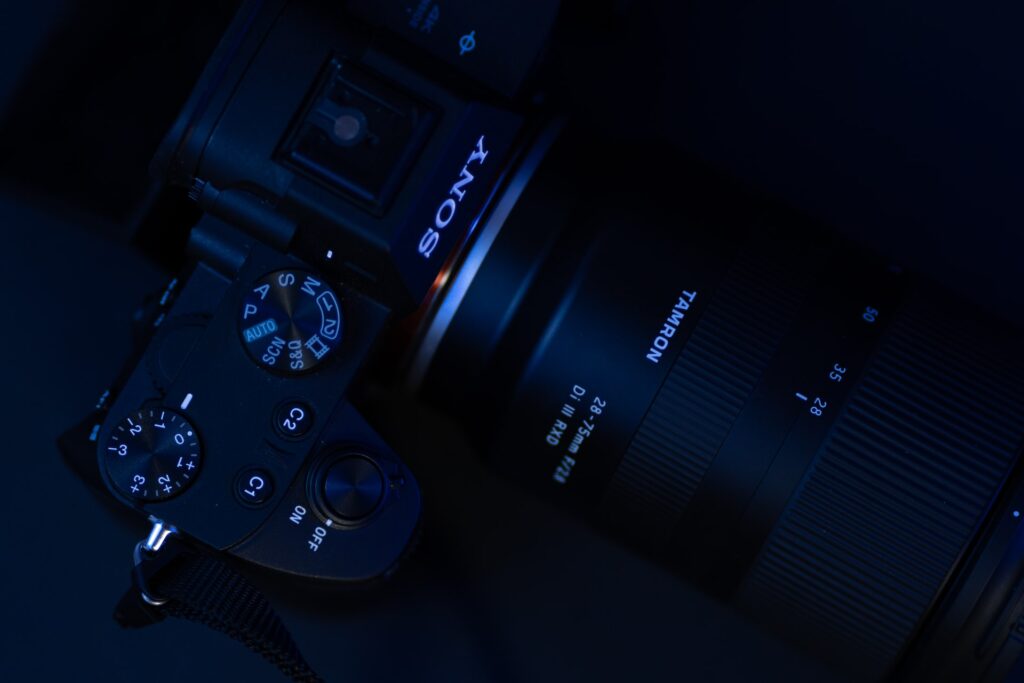
Photo by TheRegisti on Unsplash
Introduction:
The first difference between mirrorless cameras and DSLRs is that the former doesn’t have a mirror or prism, which is why they are called “mirrorless.” This means that there is no flipping or pivoting of the lens to create an image, so there’s no need to worry about shutter lag. These cameras also have a much smaller body than DSLRs, which makes it easier for photographers to carry them around with them in their bags. They also don’t have the bulkiness of DSLRs, so videographers can easily use them without feeling like they are holding up an elephant on their shoulder.
The next major difference is that mirrorless cameras use an electronic viewfinder instead of an optical one like with DSLR models. This means that you can see what your picture will look like before you take it, which is something that many photographers enjoy because it allows them to make adjustments before, they take the final photo. Here’s an article on Mirrorless Cameras vs DSLRs that explains all the practical and technical differences.
Types of Sensors:
Sensor size is really a key call in selecting the most effective mirrorless camera for your needs. Here is a run-down of the most sizes available:
Micro Four Thirds
Micro Four Thirds cameras are a type of digital camera that uses a lens mount that is four-fifths the size (by volume or weight) and half the cost of a traditional full-frame DSLR. They’re also lighter than other mirrorless cameras. They are significantly smaller than traditional DSLRs, which makes them easier to travel with. They have less bulk, so they’re more comfortable to hold in your hands for long periods of time and feel less cumbersome when you’re carrying them around.
APS-C
APS-C cameras are the most popular choice for photographers. They offer a good balance of price and image quality. These cameras have been around since the late 1990s and they have evolved over time to keep up with the latest technology. They are a good option for those who want to take their photography skills to the next level or just want to learn how to take better photos in general. With these cameras, you can explore different techniques like depth of field, aperture priority, and shutter priority.
Full-frame 35mm
Full-frame 35mm camera market has been growing in recent years, and the trend is set to continue. Mirrorless cameras are lighter and more compact than DSLRs, which makes them a popular choice for photographers who want to travel light. With a sensor that matches or exceeds the size of a frame of 35mm film. This type of camera is designed for professional photographers who need high-resolution images with low noise levels and high dynamic range.
Medium format
Medium format cameras are designed to create the highest quality images and are often used by professionals and serious photographers. These cameras have larger sensors than 35mm film or DSLRs. This means that they produce sharper images with a greater dynamic range than smaller sensor formats. It also means that they can be used with lenses in far wider focal lengths without any significant loss of quality due to crop factors.
——————————————
The best mirrorless cameras in 2023:

1. Fujifilm X-H2
Best overall camera for photos, videos, and price.
Specifications
Type: Mirrorless
Sensor: APS-C X-Trans 5 HR BSI
Megapixels: 40
Lens mount: Fujifilm X
Viewfinder: 5.76-million-dot OLED
Memory card: 1 x CFexpress Type B, 1x SD UHS-II
LCD: Vari-angle touchscreen, 1.62m dots
Max continuous shooting speed: 20fps
Max video resolution: 8K
User level: Expert/Professional
| Image | Product | Price |
|---|---|---|
 |
Fujifilm X-H2 | Check Price |
The Fujifilm X-H2 is an extremely attractive camera at an equally attractive price. This camera has the highest resolution in an APS-C camera to date, and its 40-megapixel sensor outperforms all but a few full-frame cameras. With 8K video and 5-axis IBIS to boot, you get impressive performance at an impressive price. Design and handling are identical to the X-H2S and the previous X-H1.
The status indicator panel on top of the X-H2 is particularly good, and the shutter speed and ISO dials are worth giving up. In theory, the Fujifilm X-H2’s reactions will be slower than the X-H2’s, but it’s still very snappy with fast and accurate Autofocus. Compared to the Fujifilm X-H2S below, the X-H2 offers higher resolution but slightly less continuous shooting, so for any non-action genre offering it’s the best Fujifilm camera yet.
——————————————
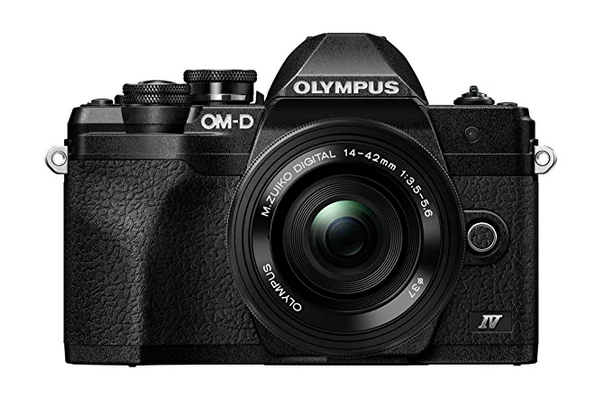
2. Olympus OM-D E-M10 Mark IV
This is a ‘beginner’ camera which is small, inexpensive and more advanced than its price.
Specifications
Type: Mirrorless
Sensor: Micro Four Thirds
Megapixels: 20.3
Lens mount: MFT
Screen: 3-inch 180-degree tilting touchscreen, 1,037k dots
Viewfinder: EVF, 2,360k dots
Max shooting speed: 8.7fps
Max video resolution: 4K UHD
User level: Beginner/intermediate
| Image | Product | Price |
|---|---|---|
 |
Olympus OM-D E-M10 Mark IV | Check Price |
The E-M10 series has always been designed with value in mind, but this Mark IV version also offers performance and sophistication with a 20MP sensor, improved in-body image stabilization, and a new tilt and fold monitor system. While retaining the 4K video and beautiful design that made the Mark III so appealing, the Mark IV is an ideal choice for those looking for an entry-level camera that can do just about anything.
The E-M10 series has long been a popular pint-sized camera, and the Mark IV finally features Olympus’ latest 20-megapixel sensor. Even better, at today’s prices, it’s also one of the cheapest mirrorless models, which is pretty amazing considering what it is capable of.
——————————————
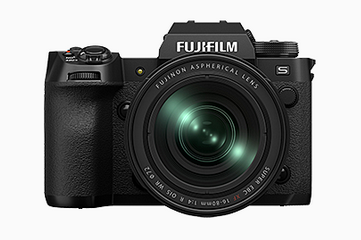
3. Fujifilm X-H2S
One of the most powerful X-mount cameras made by Fujifilm.
Specifications
Type: Mirrorless
Sensor: APS-C X-Trans 5 CMOS
Megapixels: 26.1
Lens mount: Fujifilm X
Screen: 3-inch articulating touchscreen, 1.62m dots
Viewfinder: EVF, 5.76m dots
Max continuous shooting speed: 40fps
Max video resolution: 6K
User level: Expert/Professional
| Image | Product | Price |
|---|---|---|
 |
Fujifilm X-H2S | Check Price |
The Fujifilm X-H2S is the new flagship of Fujifilm’s X-mount range. We thought the X-T4 had it all, but the X-H2S goes further, with a pro-spec beefy body and handling, a top-mounted status panel, and a fifth-generation sensor that delivers four times the speed of its predecessor.
Capable of shooting at 40fps with minimal screen disruption, the X-H2S can record 6K or 4K videos at up to 120p, features in-body stabilization, a fold-out vari-angle screen, and a 5.76m-dot electronic viewfinder.
Why doesn’t it top this list? With so much power in here, only a professional photographer or videographer will need it, and that comes at a price. The X-H2S has turned out to be one of the leading professional APS-C cameras.
——————————————
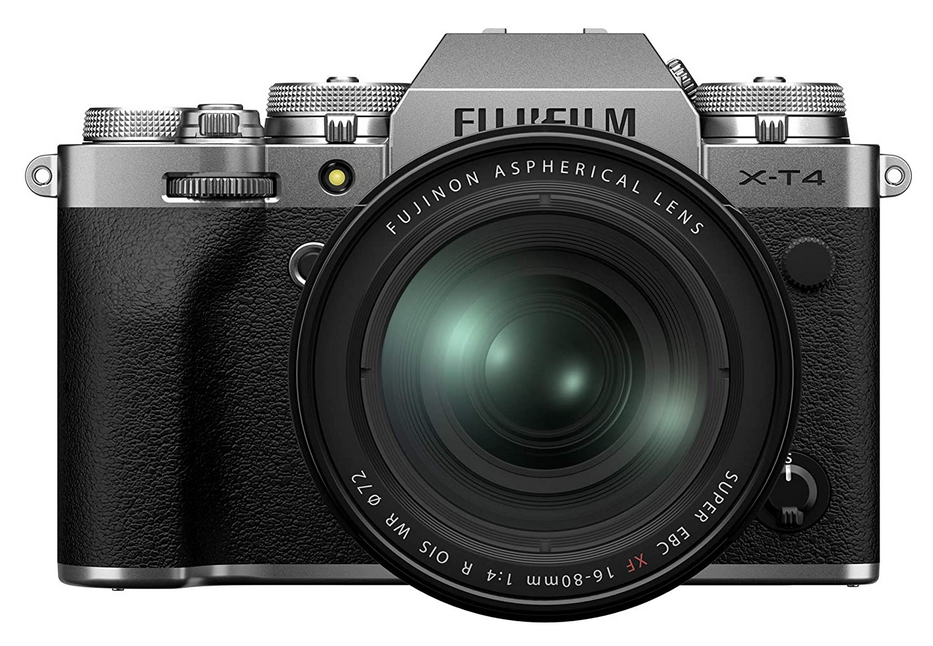
4. Fujifilm X-T4
A real APS-C powerhouse.
Specifications
Type: Mirrorless
Sensor: APS-C
Megapixels: 26.1MP
Lens mount: Fujifilm X mount
Monitor: EVF, 3,690k dots, 100% coverage
Continuous shooting speed: 11fps
Viewfinder: EVF
Max video resolution: 4K
User level: Enthusiast/Professional
| Image | Product | Price |
|---|---|---|
 |
Fujifilm X-T4 | Check Price |
The X-T4 was a model in Fujifilm’s line of X-mount cameras until the introduction of the Fujifilm X-H2S, but it is yet to be fully tested, so the X-T4 still remains the ultimate professional APS-C mirrorless camera. The X-T4 features in-body stabilization, a vari-angle touchscreen, and a fast burst mode.
Of course, the X-T4 isn’t just a great photography camera, but it has advanced 4K video performance with internal 60p 10-bit recording. The only thing stopping this camera from moving up the list is the price, which has remained high, but just a notch below some very good full-frame competitors.
——————————————
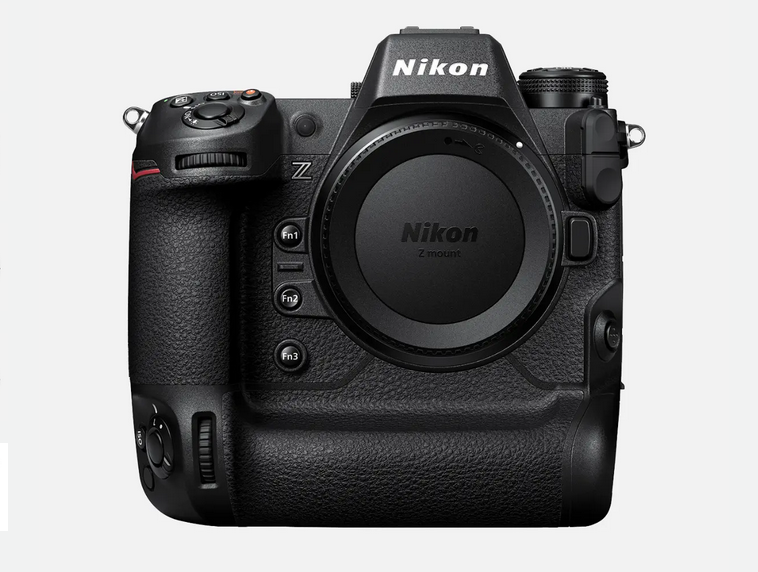
5. Nikon Z9
The ultimate pro hybrid photo/video camera for professional photographers.
Specifications
Type: DSLR
Sensor: Full-frame
Megapixels: 45.7MP
Autofocus: 493-point hybrid phase/contrast detect
Screen type: 3-inch bi-directional tilting touchscreen, 1.04m dots
Maximum continuous shooting speed: 20fps
Movies: 8K
User level: Professional
| Image | Product | Price |
|---|---|---|
 |
Nikon Z9 | Check Price |
Nikon may have been late in releasing its top-of-the-line professional mirrorless camera, but the Nikon Z9 was definitely worth the wait. It’s an absolute beast of a camera when it comes to video, beating the Canon EOS R3 out of the park. It’s capable of recording videos in 8K 60p or 8K 30p with a whopping 2 hours recording limit. Nikon has chosen to remove the mechanical shutter entirely, meaning the Z9 is capable of continuous shooting at 120 fps and a maximum shutter speed of 1/32,000, making it perfect for sports and bird photography.
The Z9 features Deep Learning AF, which allows the camera to recognize nine types: eyes, faces, heads, and upper body of humans; eyes, heads, and bodies of animals; and cars, planes, trains, and motorcycles. It has the same 493 AF points as the Nikon Z7 II, which seems impressive until you realize the Canon EOS R3 has a whopping 4779 AF points. The Z9 is slightly cheaper than the Sony A1 and Canon EOS R3 and has many advanced features.
——————————————
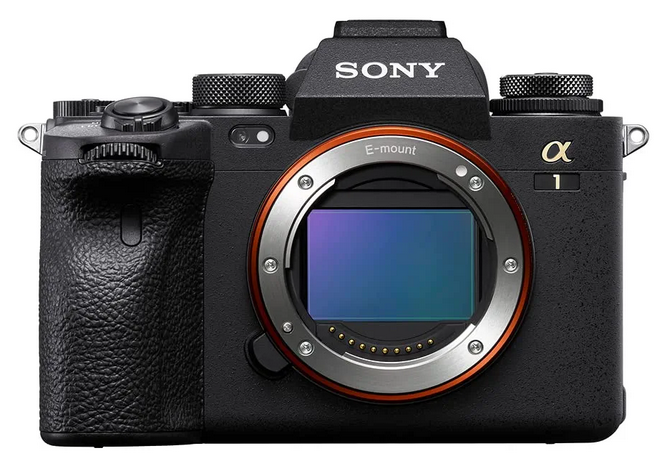
6. Sony A1
Sony A1 is a technological triumph, a camera that truly does it all.
Specifications
Type: Mirrorless
Sensor: Full frame
Megapixels: 50.1MP
Lens mount: Sony FE
Screen: 3-in tilting, 1.44m dots
Viewfinder: Electronic, 9.44m dots
Max burst speed: 30fps
Max video resolution: 8K
User level: Professional
| Image | Product | Price |
|---|---|---|
 |
Sony A1 | Check Price |
Sony says that the Sony A1 is a technological triumph, a camera that truly does it all. Earlier the cameras used to be able to offer speed, resolution, or video capability, but the A1 offers all three and even outperforms sports and video cameras which are dedicated to their own game. As good as it is, price is and remains a major hurdle, and its attraction is limited to photographers who need everything it can do, rather than just one or two of those things.
Sony pretty much killed two of their other camera models with this one. The Sony A9 Mark II is an excellent sports camera, but the A1 tops it, while the Sony A7S Mark III has superb 4K video capabilities in comparison to the A1’s 8K capture.
——————————————

7. Panasonic Lumix S5
Excellent value for money with a useful 20-60mm kit lens, a great hybrid for photo/video cameras.
Specifications
Type: Mirrorless
Sensor: Full-frame CMOS
Megapixels: 24.2MP
Lens mount: L-mount
Monitor: 3-inch vari-angle touchscreen, 1.84m dots
Continuous shooting speed: 7 fps (mechanical shutter), 6K Photo Mode (18MP @ 30fps)
Viewfinder: EVF, 2.36m dots
Max video resolution: 4K/60p
User level: Enthusiast
| Image | Product | Price |
|---|---|---|
 |
Panasonic Lumix S5 | Check Price |
The original Lumix S1 and S1R are powerful and impressive cameras, but big in size. Panasonic took that into account and introduced the Lumix S5, a camera that offers basically the same imaging performance as the bulky 24-megapixel Lumix S1, but in a body that weighs around 300g less. It shoots 4K/60p 10-bit video, and in terms of dynamic range, on paper, only the professional Sony A7S III can match or surpass it.
The science of color is fine-tuned for a beautiful image. Photographers can also use the 6K photo mode to take burst shots at 30fps to ensure they don’t miss a moment. Compared to full-frame hybrid cameras, that’s extremely hard to beat, especially at today’s prices.
——————————————
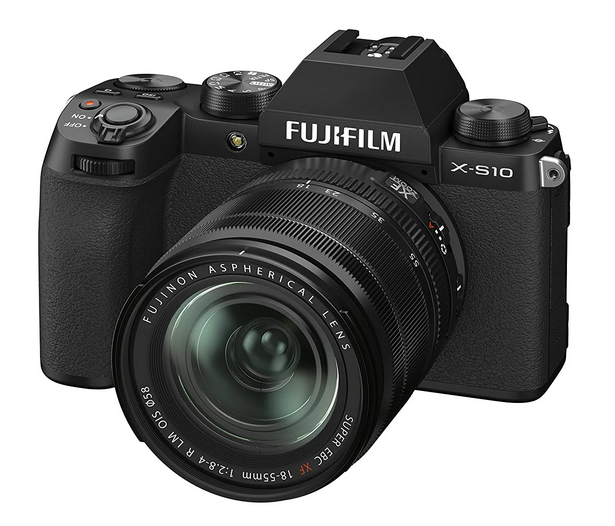
8. Fujifilm X-S10
The best combination of features and performance at this price.
Specifications
Type: Mirrorless
Sensor: APS-C
Megapixels: 26.1MP
Lens mount: Fujifilm X
Screen: 3-inch vari-angle touchscreen, 1.04m dots
Viewfinder: EVF, 2,360k dots
Max continuous shooting speed: 30/8fps
Max video resolution: 4K
User level: Intermediate/Expert
| Image | Product | Price |
|---|---|---|
 |
Fujifilm X-S10 | Check Price |
The Fujifilm X-S10 doesn’t have the external exposure controls found on higher-end X-series cameras, but that’s all we have to complain about and this is clearly not an “amateur” camera given its build quality and handling stand out immediately.
Moving to a traditional mode dial might disappoint Fujifilm fans, but the build quality, handling, and superb finish, along with the integration of IBIS (in-body stabilization) give this camera great appeal. especially at this price point to produce perhaps the best combination of performance, quality, and value on the APS-C mirrorless camera market right now. It even has a tilting rear screen.
——————————————

9. Nikon Z FC
The Nikon Z FC is undoubtedly one of the best-looking, retro styling, and most valuable mirrorless camera out there right now.
Specifications
Type: Mirrorless
Sensor: APS-C CMOS
Megapixels: 20.9MP
Monitor: 3.2-inch tilting, 1.04m dots
Continuous shooting speed: 11fps
Viewfinder: EVF, 2.36m dots
Max video resolution: 4K UHD at 30p
User level: Beginner/enthusiast
| Image | Product | Price |
|---|---|---|
 |
Nikon Z FC | Check Price |
The Nikon Z FC is undoubtedly one of the best-looking mirrorless cameras out there right now. It is a retro-style mirrorless camera with dial controls, and it’s fun to operate, use, and be seen. Internally it is basically the same as the Nikon Z50, with the same APS-C sensor and processor and many of the same specs. Some extra features, like a built-in flash, have been removed, and it is more expensive than the Z50.
So, if you’re not concerned with aesthetics, Nikon’s other DX-format cameras are a wiser choice, and there are only two Nikon Z DX lenses left to go with it. However, many photographers only want a kit lens and nothing else, so that’s not a problem for them.
——————————————
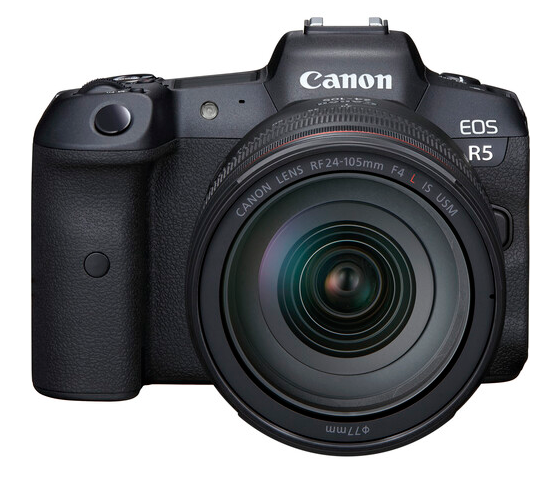
10. Canon EOS R5
The Canon EOS R5 is simply Canon’s best product so far with the first 8K mirrorless camera.
Specifications
Type: Mirrorless
Sensor: Full frame
Megapixels: 45
Lens mount: Canon RF
Monitor: 3.15-inch vari-angle touchscreen, 2,100k dots
Viewfinder: OLED EVF, 5,690k dots, 100% coverage, 0.76x magnification
Max continuous shooting speed: 12fps mechanical shutter, 20fps electronic
Max video resolution: 8K
User level: Professional
| Image | Product | Price |
|---|---|---|
 |
Canon EOS R5 | Check Price |
The Canon EOS R5 is simply Canon’s best product so far. It Is the perfect fusion of the form of the EOS R, the function of the EOS 5D, and the professional autofocus of the EOS-1D X. Whether you’re a hybrid shooter or a stills photographer who vacillates between photography and videography, it is one of the best cameras for you to have the pleasure of using it.
The video capabilities are awesome, but bypassing the overheating limitations will keep it from being your number 1 camera (unless you are shooting 4K/30p only, in which case you don’t need it anyway). It’s not perfect at everything, but it is so good at so many things that it’s still a flagship camera. The Sony A1 is ahead in specs, but the Canon is MUCH cheaper.
——————————————
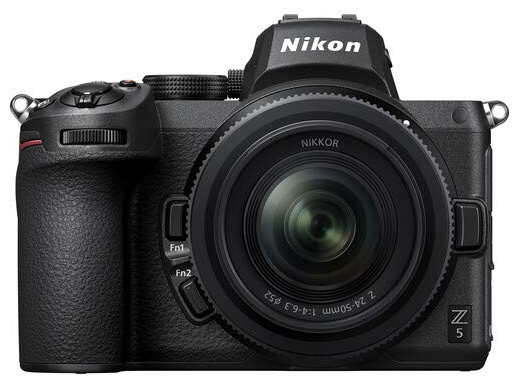
11. Nikon Z5
It is a low-cost entry-level full-frame camera for the Nikon Z system that offers quality for beginners.
Specifications
Type: Mirrorless
Sensor: Full-frame CMOS
Megapixels: 24.3MP
Lens mount: Nikon Z
Monitor: 3.2-inch tilting touchscreen, 1,040k dots
Continuous shooting speed: 4.5fps
Viewfinder: EVF, 3,690k dots, 100% coverage, 0.8x magnification
Max video resolution: 4K UHD at 30p
User level: Beginners / Enthusiast
| Image | Product | Price |
|---|---|---|
 |
Nikon Z5 | Check Price |
While Nikon has done a substantial job of filling the top end of its Z range of full-frame mirrorless cameras with the flagship Z7 II, and even found room for a bold APS-C offering with the Z50, it was arguably without a full-frame entry-level camera. The Nikon Z5, a sleek little shooter that offers full-frame capabilities at an attractive price, has filled in that gap.
With two card slots and 4K UHD video, it picks up some hints from professional bodies, although it doesn’t burst faster than 4.5 fps. With full weather sealing, five-stop image stabilization, and a stunning electronic viewfinder, anyone jumping to full-frame for the first time is going to be absolutely spoiled by the features. The excellent price point is far below that of the Nikon Z6 II and its sleek retractable lens kit makes it the most liked camera.
——————————————

12. Panasonic Lumix G100
It is a cheap, portable, and really likable camera for travel/vlogging.
Specifications
Type: Mirrorless
Sensor: Micro Four Thirds
Megapixels: 20.3
Lens mount: MFT
Screen: 3-inch vari-angle, 1,840k dots
Viewfinder: EVF, 3.69m dots
Max continuous shooting speed: 10fps
Max video resolution: 4K UHD
User level: Beginner/enthusiast
| Image | Product | Price |
|---|---|---|
 |
Panasonic Lumix G100 | Check Price |
The best camera for beginners, bloggers, and travel photographers has just sneaked in at the last position on this list and is the cheapest camera. For many of us, videos are just as important as stills, if not more so, and it is for these vloggers and content creators that the Lumix G100 is targeted. It makes it easy to capture high-quality videos and still images with its accessible button layout. Even people who don’t care about the technical aspects of shooting good-looking videos will be able to get results with this camera.
Panasonic has given the G100 an edge in a highly competitive market by equipping it with a worthy viewfinder and the right camera ergonomics. This is a great camera to start with if you’re more into vlogging than regular photography, and it is a useful improvement over the GX80/85 in terms of resolution and video capabilities.
——————————————
Conclusion: Best Mirrorless Camera 2023
How to pick the best mirrorless camera?
The criteria when buying a mirrorless camera are pretty much the same as when buying any type of camera. What is your budget? How experienced are you? and What do you intend to do with the camera?
If you’re new to mirrorless cameras, or photography in general, it’s worth picking up a cheaper model with more beginner-friendly features, like in-camera instructions explaining various settings. If you are shooting sports or wildlife, you want a camera that can take a lot of photos quickly and a camera that has in-camera stabilization. While mirrorless cameras are known for their smaller size compared to DSLRs, if you want to take it with you when you travel, you should have a more compact camera.
——————————————
Related articles to read:
Mirrorless Cameras vs DSLR 2023
Best DSLR Cameras 2023
About the Author:
Yazaad B Karai is a professional freelance photographer based in Mumbai, India, a diploma holder from Ultimate Photography Courses (IAO) UK, and have carved a niche in professional photography and work with a passion in the field of Architecture, Food, Portrait, and Product photography.
He constantly updates his content with helpful information and articles in his Blogs, where he shares knowledge in photography and photography equipment. You can find him HERE.
Disclaimer:
The views expressed in this article are the author’s own. The information contained in this article is for general information purposes only and does not necessarily reflect the opinions of any organization. The author will not be held responsible for any actions taken based on the information provided in this article.
Yazaad B Karai Photocraft uses affiliate links and does earn a commission from certain links, posted on the website or blog. This does not affect your purchases or the price you may pay. If you purchase a product or service with the links provided, I may receive a small commission. There is no additional charge to you. Thank you for supporting me so I can continue to provide you with free content.
